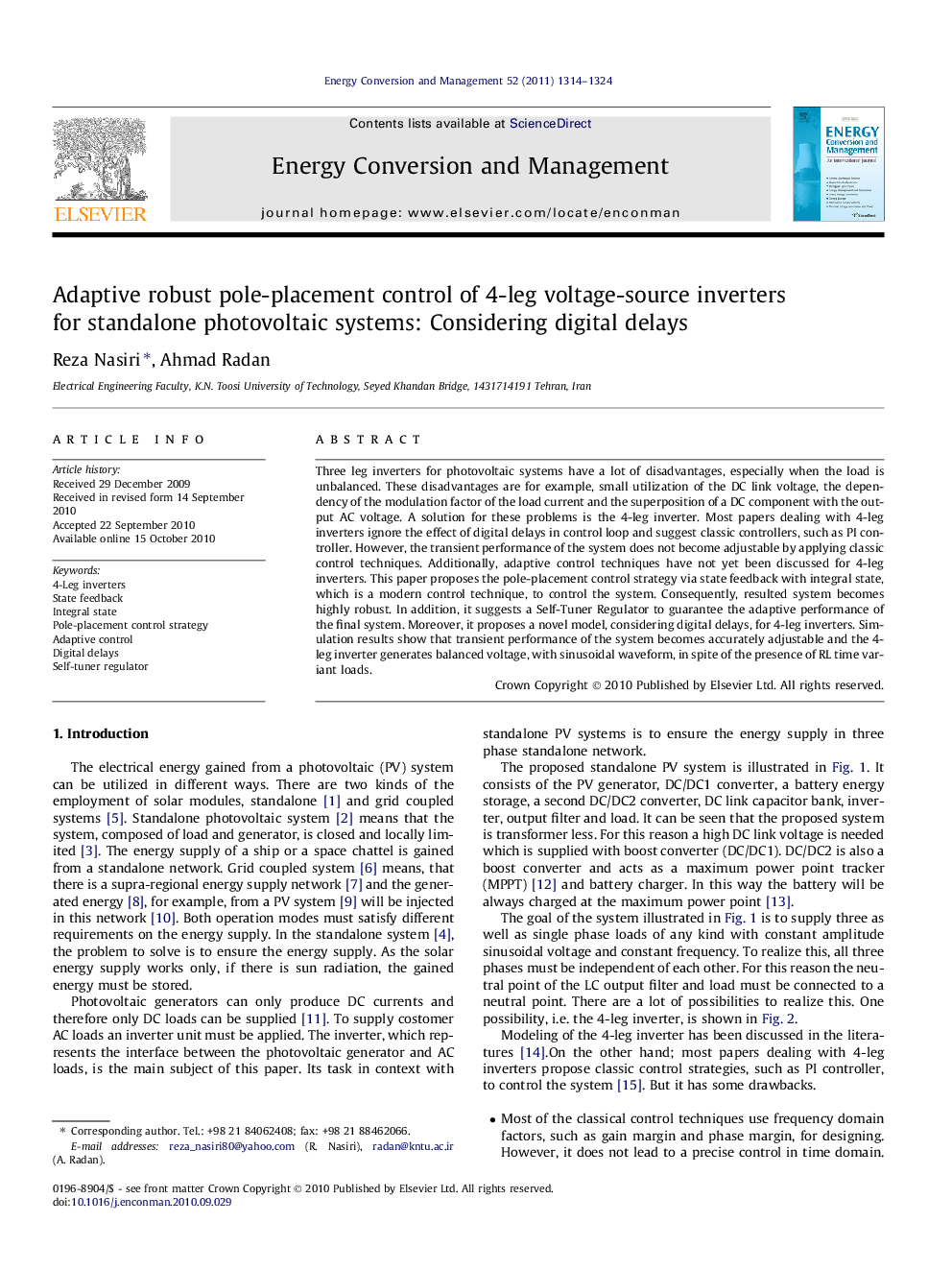| Article ID | Journal | Published Year | Pages | File Type |
|---|---|---|---|---|
| 764548 | Energy Conversion and Management | 2011 | 11 Pages |
Three leg inverters for photovoltaic systems have a lot of disadvantages, especially when the load is unbalanced. These disadvantages are for example, small utilization of the DC link voltage, the dependency of the modulation factor of the load current and the superposition of a DC component with the output AC voltage. A solution for these problems is the 4-leg inverter. Most papers dealing with 4-leg inverters ignore the effect of digital delays in control loop and suggest classic controllers, such as PI controller. However, the transient performance of the system does not become adjustable by applying classic control techniques. Additionally, adaptive control techniques have not yet been discussed for 4-leg inverters. This paper proposes the pole-placement control strategy via state feedback with integral state, which is a modern control technique, to control the system. Consequently, resulted system becomes highly robust. In addition, it suggests a Self-Tuner Regulator to guarantee the adaptive performance of the final system. Moreover, it proposes a novel model, considering digital delays, for 4-leg inverters. Simulation results show that transient performance of the system becomes accurately adjustable and the 4-leg inverter generates balanced voltage, with sinusoidal waveform, in spite of the presence of RL time variant loads.
